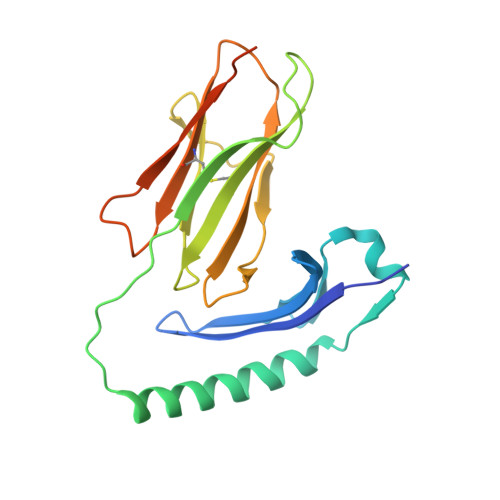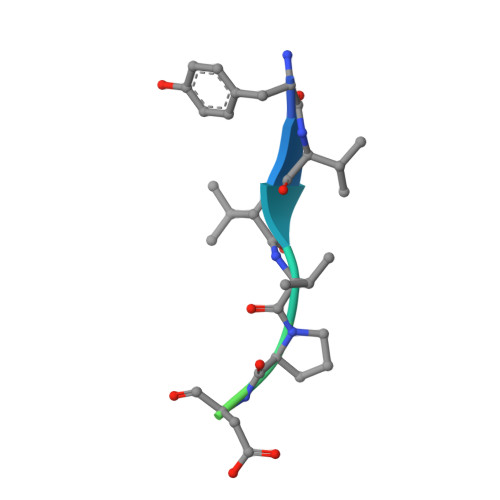Stress-testing the relationship between T cell receptor/peptide-MHC affinity and cross-reactivity using peptide velcro.
Gee, M.H., Sibener, L.V., Birnbaum, M.E., Jude, K.M., Yang, X., Fernandes, R.A., Mendoza, J.L., Glassman, C.R., Garcia, K.C.(2018) Proc Natl Acad Sci U S A 115: E7369-E7378
- PubMed: 30021852
- DOI: https://doi.org/10.1073/pnas.1802746115
- Primary Citation of Related Structures:
6BGA - PubMed Abstract:
T cell receptors (TCRs) bind to peptide-major histocompatibility complex (pMHC) with low affinity ( K d ∼ μM), which is generally assumed to facilitate cross-reactive TCR "scanning" of ligands. To understand the relationship between TCR/pMHC affinity and cross-reactivity, we sought to engineer an additional weak interaction, termed "velcro," between the TCR and pMHC to probe the specificities of TCRs at relatively low and high affinities. This additional interaction was generated through an eight-amino acid peptide library covalently linked to the N terminus of the MHC-bound peptide. Velcro was selected through an affinity-based isolation and was subsequently shown to enhance the cognate TCR/pMHC affinity in a peptide-dependent manner by ∼10-fold. This was sufficient to convert a nonstimulatory ultra-low-affinity ligand into a stimulatory ligand. An X-ray crystallographic structure revealed how velcro interacts with the TCR. To probe TCR cross-reactivity, we screened TCRs against yeast-displayed pMHC libraries with and without velcro, and found that the peptide cross-reactivity profiles of low-affinity ( K d > 100 μM) and high-affinity ( K d ∼ μM) TCR/pMHC interactions are remarkably similar. The conservation of recognition of the TCR for pMHC across affinities reveals the nature of low-affinity ligands for which there are important biological functions and has implications for understanding the specificities of affinity-matured TCRs.
Organizational Affiliation:
Department of Molecular and Cellular Physiology, Stanford University School of Medicine, Stanford, CA 94305.






















